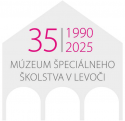The term autism (etymologically from the Greek word eaftismos, which is “closed in itself”) was first used by Swiss psychiatrist Bleuler in his work Dementia Preacox from 1913. He used this term regarding adult patients with schizophrenia. In 1943 an American psychiatrist Leo Kanner described his pediatric patients who were significantly different from all others. He characterized in detail eleven cases from his clinical practice (8 boys and 3 girls). The main dominant that protruded was their inability to have contact with the social environment that influenced their behavior in all areas of life and functioning. Kanner called this specific diagnostic group as early infantile autism.
Autism is a pervasive developmental lifelong disorder of the development which is characterized by: impaired ability of communication, social behavior and imagination.
In Slovakia, there are no publicly available statistics on the number of people diagnosed with ASD (autism spectrum disorder). According to statistics from 2012 the autism affects every hundredth man in Europe. Based on this conversion there is more than 54 000 people in Slovakia living with autism spectrum disorder.
According to the diagnostic criteria of the World Health Organization we divide autism spectrum disorders as follows:
Children’s autism – it is a disorder present in all three areas: social relationships, communication and imagination. Symptoms are noticeable at a very early age, it occurs within three years of life.
Other childhood disintegrative disorder – before the onset of diagnosis (about two years), the individual is developing normally but after the outbreak of diagnosis there occurs loss of the earlier acquired skills, e.g. speech, play, social skills and there occurs the onset of changes in communication, social interaction.
Atypical autism – it occurs after the age of three. The abnormalities may not be present in all three categories.
Hyperactivity disorder associated with mental retardation and stereotyped movements – it occurs in children with severe mental retardation with an IQ below 50. Typical symptoms: hyperactivity, unstable attention, stereotyped behavior, delays in development.
Rett syndrome – it occurs only in girls, the boys with this syndrome die before or shortly after their birth. Indicative is the loss of already acquired skills and functional hand movements, poor chewing and excessive salivation, speech disability, severe mental disability.
Asperger syndrome – it primarily differs from autism because it does not contain general delay or retardation of both the speech and cognitive development. Most individuals have general intelligence but is usually clumsy. The disease occurs mainly in boys in a ratio of about 8:1. It is reflected by the lack of interest to develop relations with peers, incomprehension and suppressing of emotions, stereotyped and repetitive repertoire of interests and activities, inability to establish eye contact.
This disorder is named after the Austrian psychiatrist Hans Asperger (1906-1980), who first defined Asperger Syndrome, which was named by Asperger as autistic psychopathy in 1944. The term was in 1981 replaced by the term Asperger syndrome.
Other non-specified pervasive developmental disorders – disorders that can not be incorporated into other classification.
Sources:
Autism in practice, Children and pupils with autism in teaching practice, Dagmar Beluskova, Andrea Sedibova, Methodological and Pedagogical Center, 2014, Bratislava

